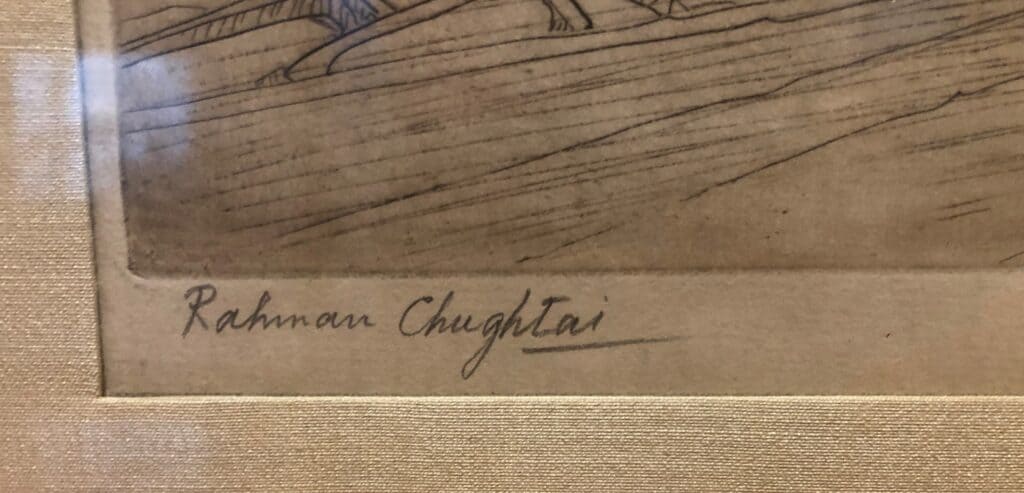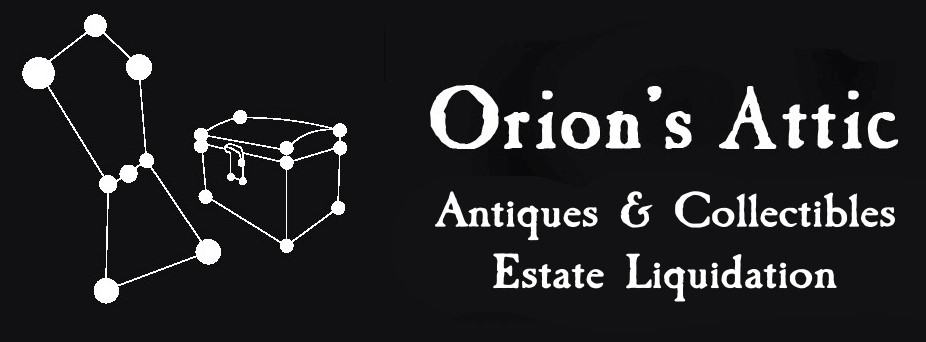
“Spinning Wheel”
An estate liquidation and home cleanout client of ours pointed to an appraisal performed by another company (not us) and asked, “What’s My Rahman Chughtai Print Worth?”
In other words, “Are they really worth that much?”
I put up the two-hand “stop!” gesture as soon as I spotted the pair of limited-edition antique prints — one appraised at $10,000, the other at $9,000.
Without having done the first lick of research on the artist, I issued my first two cautions to our client:
- There’s little demand for the overwhelming number of limited edition prints on the market.
- Most appraisals we see are misleading when it comes to listed values.
“My experience and my gut tell me that the figures these prints will actually sell for are probably 10 percent of those numbers,” I said. “Let me do some research and give you a couple of options on the best way of selling the prints — and a better idea of what they might bring.”
Artist Rahman Chughtai biography at a glance
Getting the basic background information on an accomplished artist is easy.
Chughtai lived from 1894 to 1975. He was a painter, artist, and intellectual from Pakistan who created his own unique, distinctive painting style. Chughtai was influenced by Mughai art, miniature painting, art, nouveau, and Islamic art traditions. He is considered to be “the first significant modern Muslim artist from Pakistan” and the national artist of Pakistan. He was given the title of Khan Bahadur by the British Empire in India, in 1934, awarded Pakistan’s Crescent of Excellence award in 1960, and the Pride of Performance Award in 1958 by the president of Pakistan.
Chughtai print appraisal value versus real-world value
The two mid-twentieth-century prints in question were drypoint etchings on paper. Both were signed. “Kashmiri Woodcutter” was a limited edition of just 75 pieces. It measured approximately 18 inches by 11.5 inches. The appraiser listed the fair market value of that piece at $10,000. “Spinning Wheel”, meanwhile, measured approximately 16 inches by 15 inches and appraised at $9,000.
To the appraiser’s credit, the appraiser did state what we always do in the appraisals we perform — that selling items at auction, as the case would be here, is likely to produce sales lower than the listed fair market value. The appraiser stated that items may sell for 30 to 50 percent less than the stated fair market value. (We often state that the range can be 30 to 90 percent less.)

“Kashmiri Woodcutter”
The appraisal findings fell apart after that, however.
There were two major things wrong with the values listed for the Chughtai prints.
- The appraiser cited comparables (comps) that were 10 to 12 years old — referencing auction house sales records including Bonhams, Freeman’s, and Christie’s. Sales records of any kind that are a decade old aren’t generally worth the paper they’re printed on. The market for all kinds of antiques, art, and collectibles is much more volatile than that. Items that are popular can go out of fashion in a heartbeat. Things worth seemingly nothing can suddenly generate six and seven figures when they go up for sale.
- The appraiser in question was a typical appraiser — meaning he or she had spent much of his or her professional life in an ivory tower. The appraiser had lots of big-time academic and appraisal credentials. The appraiser did not have much experience actually selling objects. There is no better education in the antiques and collectibles world than spending years investing your own money buying objects and then reselling them for a profit or a loss.
Freeman’s, by the way, is our favorite national auction house. We have good relationships there and we’ve had great success selling some rare items. I reached out to Freeman’s in Philadelphia and found that it wasn’t interested in handling the Chughtai prints. I contacted the New York City auction houses. They weren’t interested, either.
No national or international auction house interested in Chughtai prints
I used a service enabling us to offer the prints to a network of national and international auction houses. Not one responded with a “yes”.
Why the crickets?
Refer back to the first point I made at the top of this article: There’s little demand for the overwhelming number of limited edition prints on the market today. Art buyers, with some exceptions, are only willing to pay good money for original works of art — not limited edition prints.
I shared with our client everything we had learned. I suggested we could try making direct sales, shooting for big numbers, or we could send the prints to a local auction house and let them sell for whatever the market brings. We ultimately decided to seek private sales first — see if we get lucky and find that unicorn buyer.
More crickets.
Eventually, the executor needed to wrap up the project as we had already sold everything else. We sent the prints to our favorite local auction house. It put them in a nationally advertised online sale and …
One of the Chughtai prints sold for $1,000, the other for $975 — exactly what I first suspected would be the sales prices. Ten percent of the appraised value.
The morals of the story when you ask a question such as, “What’s my Rahman Chughtai print worth”?
A lot of calculation goes into determining accurate values for items — and you’re always very well served by talking to companies like us that actually buy and sell antiques and collectibles for a living.
The view from ivory towers can be mighty distant.
Learn more about selling all kinds of collectibles including vintage prints in Sell Us Your Stuff.
Learn more about liquidating entire estates in our Estate Liquidation and Downsizing Guide.
Do you need a personal property appraisal for probate court or insurance?
We provide appraisal services, too. Contact us today!
Getting good info from our site? Like us on Facebook and tell some friends!


